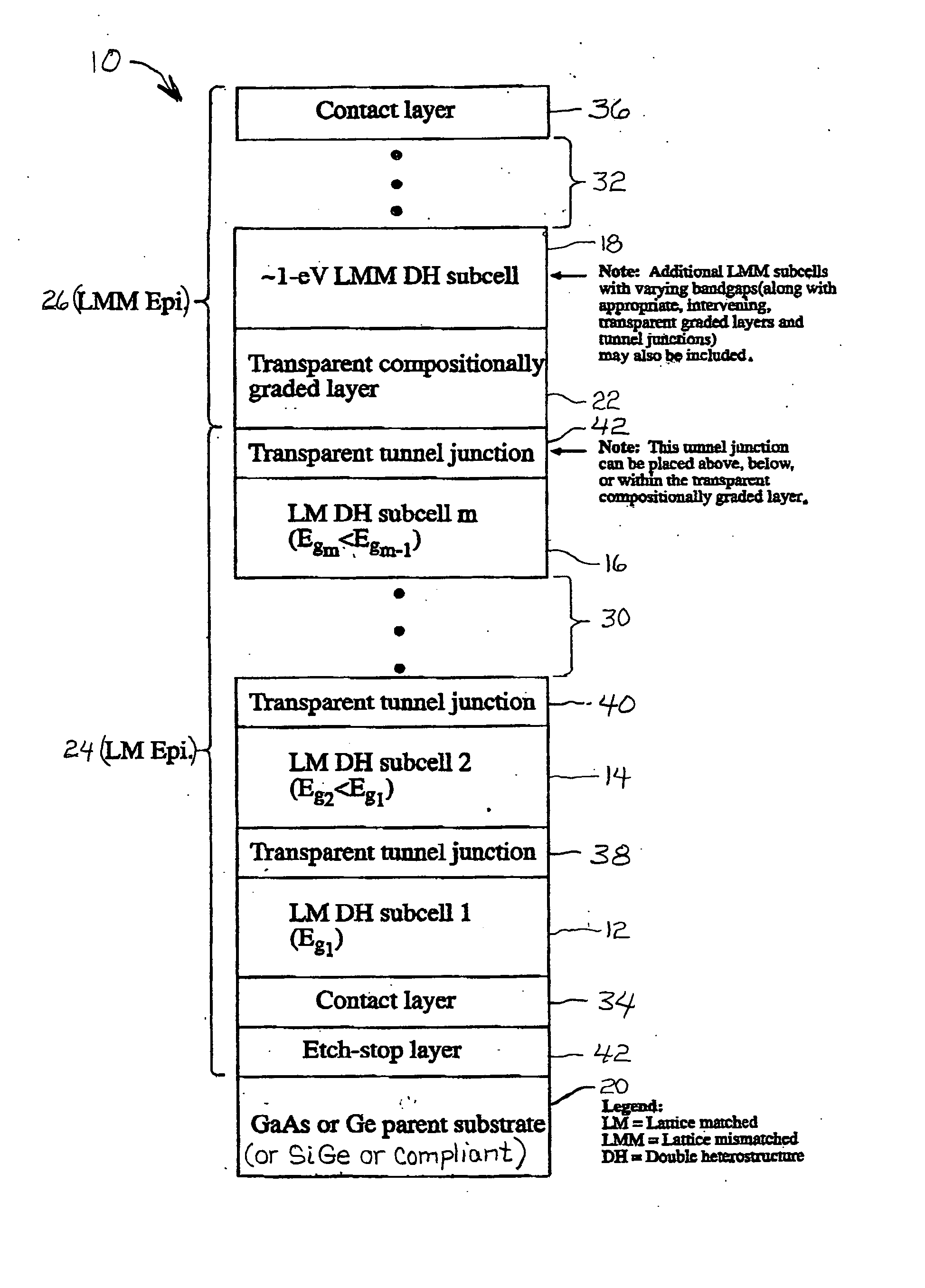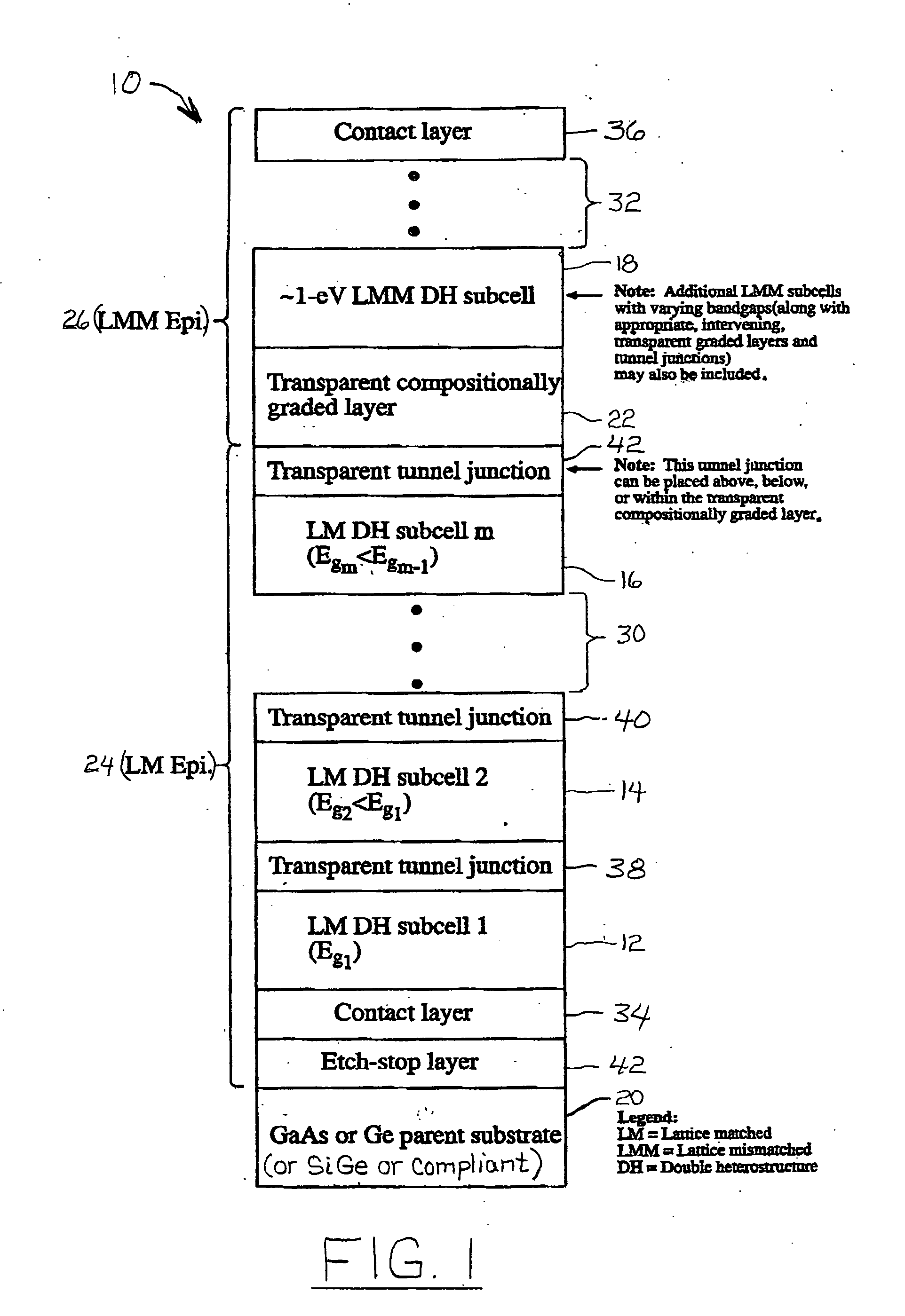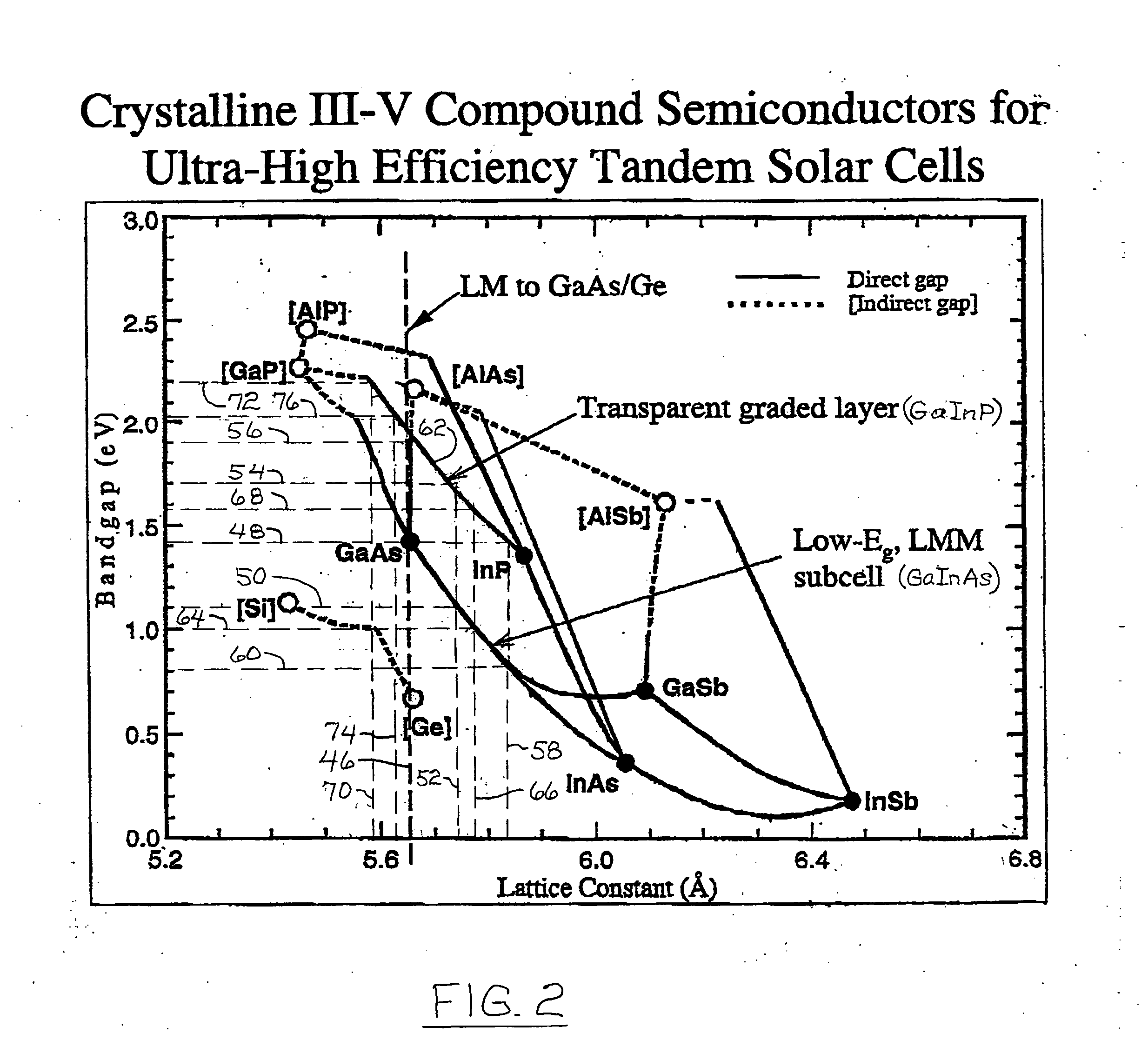High-efficiency, monolithic, multi-bandgap, tandem photovoltaic energy converters
a photovoltaic and solar energy converter technology, applied in the field of monolithic, multi-bandgap, tandem photovoltaic solar energy converters, can solve the problems of reducing energy conversion efficiency, inefficiency and energy loss of unwanted heat, and knowledge alone cannot solve the problem of making efficient and useful energy conversion devices, and achieves high efficiency, flexibility, and special usefulness. , the effect of avoiding defects in lattice-mismatched layers
- Summary
- Abstract
- Description
- Claims
- Application Information
AI Technical Summary
Benefits of technology
Problems solved by technology
Method used
Image
Examples
examples
[0064] A series-connected, three-subcell device was grown on a GaAs substrate. LM n-GaInP {(1 μm) etch-stop and n-GaAs (0.4 μm) contact layers were grown first. A LM DH top subcell comprising an n-AlInP (25 nm) front-surface confinement layer (FSCL), n-GaInP (0.1 μm, ordered) emitter layer, p-GaInP (1.2 μm, ordered) base layer, and a p-GaInP (0.1 μm, disordered) back-surface confinement layer (BSCL) was then deposited, followed by a p+ / n+ GaAs tunnel junction (24 nm total thickness). The LM middle subcell comprises a n-GaInP (0.1 μm) emitter layer, a p-GaAs (2.5 μm) base layer, and a p-GaInP (50 nm, ordered) BSCL, followed by another p+ / n+ GaAs tunnel junction (24 nm total thickness). A transparent, compositionally step-graded GaInP layer was then grown to affect a change in lattice constant to match that of the low bandgap (˜1 eV) GaInAs alloy (Ga mole fraction of 0.75, LMM ˜2.2%). The step grade included nine compositional steps with a Ga mole fraction increment of 0.03 per step, ...
PUM
 Login to View More
Login to View More Abstract
Description
Claims
Application Information
 Login to View More
Login to View More - R&D
- Intellectual Property
- Life Sciences
- Materials
- Tech Scout
- Unparalleled Data Quality
- Higher Quality Content
- 60% Fewer Hallucinations
Browse by: Latest US Patents, China's latest patents, Technical Efficacy Thesaurus, Application Domain, Technology Topic, Popular Technical Reports.
© 2025 PatSnap. All rights reserved.Legal|Privacy policy|Modern Slavery Act Transparency Statement|Sitemap|About US| Contact US: help@patsnap.com



